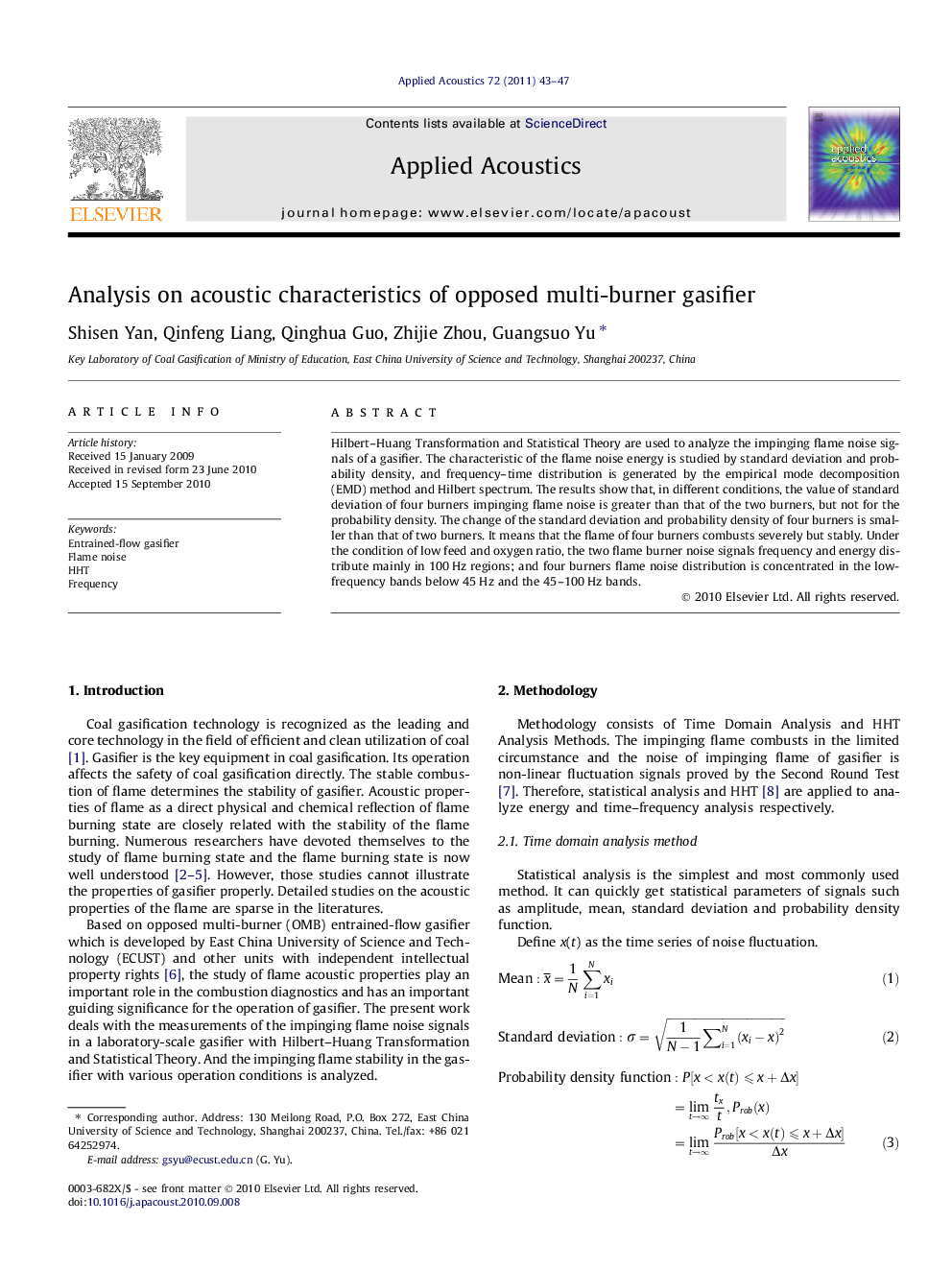| Article ID | Journal | Published Year | Pages | File Type |
|---|---|---|---|---|
| 754951 | Applied Acoustics | 2011 | 5 Pages |
Abstract
Hilbert-Huang Transformation and Statistical Theory are used to analyze the impinging flame noise signals of a gasifier. The characteristic of the flame noise energy is studied by standard deviation and probability density, and frequency-time distribution is generated by the empirical mode decomposition (EMD) method and Hilbert spectrum. The results show that, in different conditions, the value of standard deviation of four burners impinging flame noise is greater than that of the two burners, but not for the probability density. The change of the standard deviation and probability density of four burners is smaller than that of two burners. It means that the flame of four burners combusts severely but stably. Under the condition of low feed and oxygen ratio, the two flame burner noise signals frequency and energy distribute mainly in 100Â Hz regions; and four burners flame noise distribution is concentrated in the low-frequency bands below 45Â Hz and the 45-100Â Hz bands.
Keywords
Related Topics
Physical Sciences and Engineering
Engineering
Mechanical Engineering
Authors
Shisen Yan, Qinfeng Liang, Qinghua Guo, Zhijie Zhou, Guangsuo Yu,
